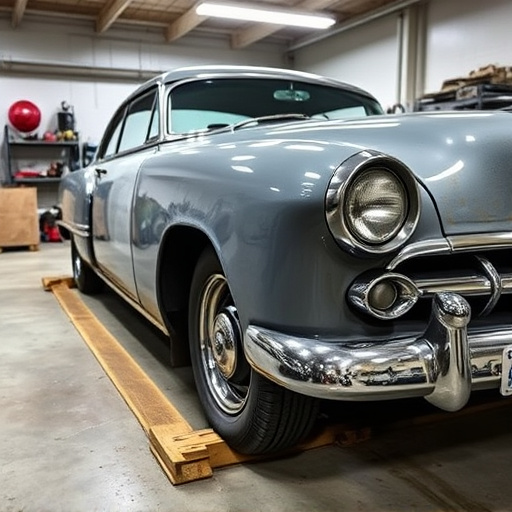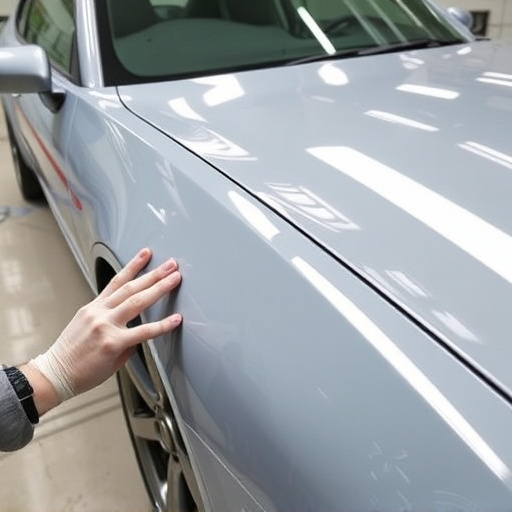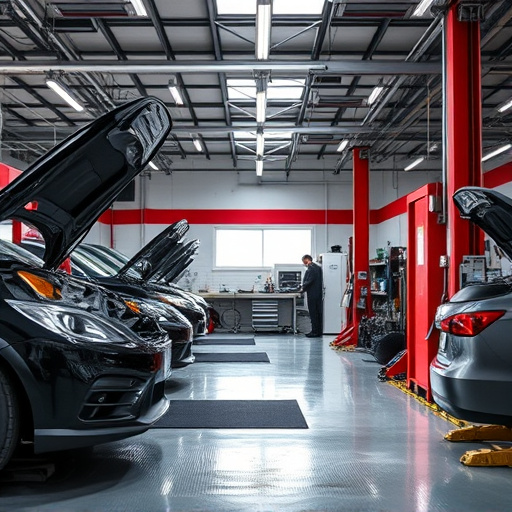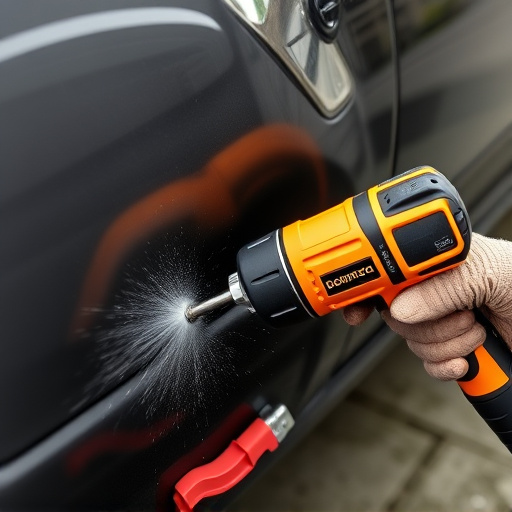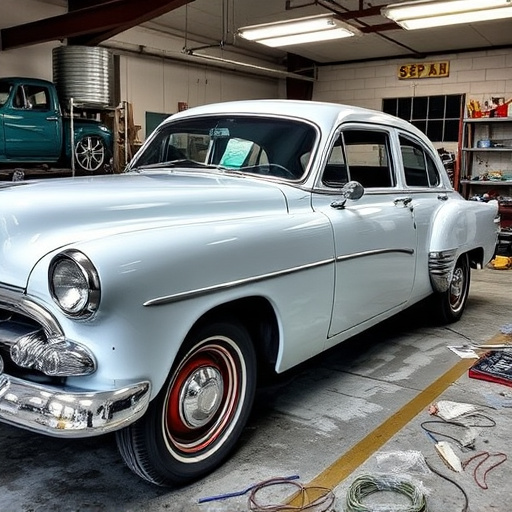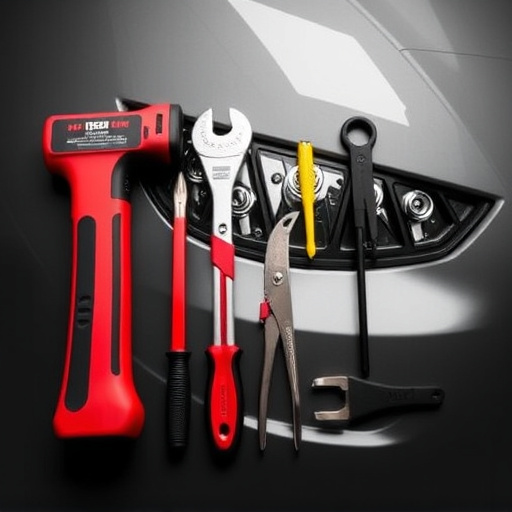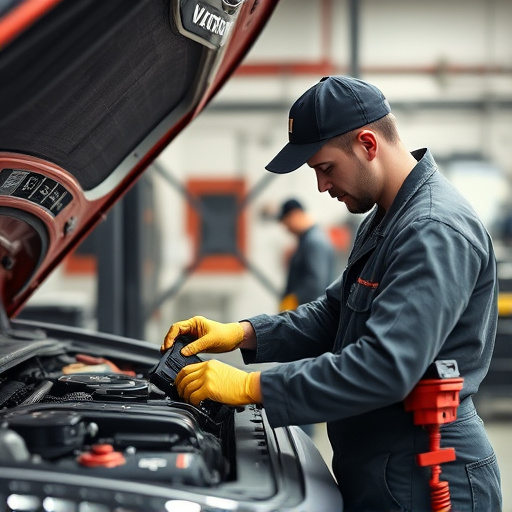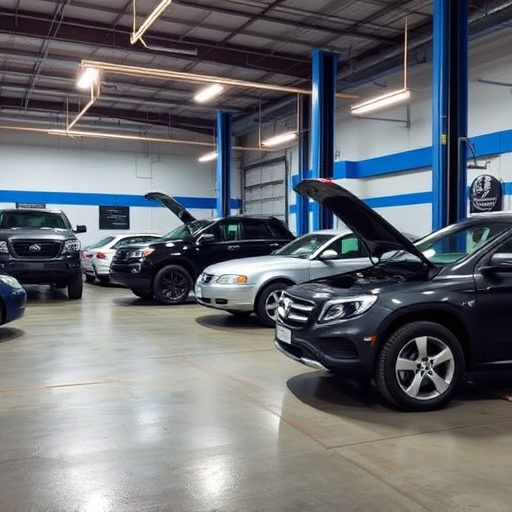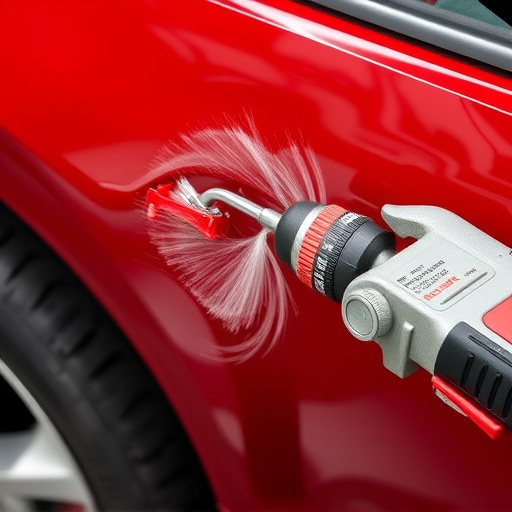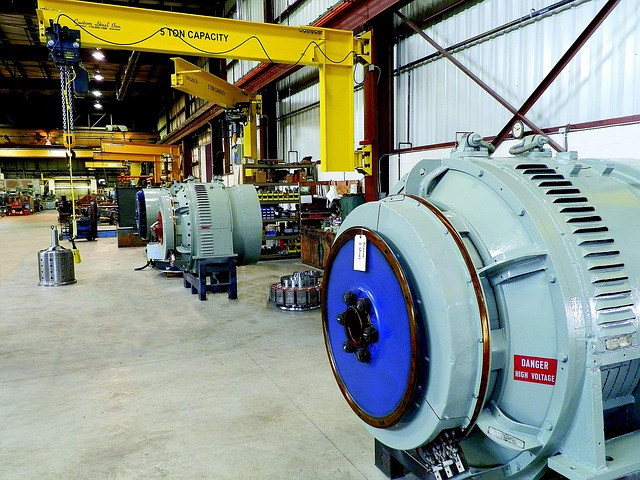The Tesla Air Suspension System, utilizing compressed air for height adjustment, offers performance and stability benefits. Regular maintenance is crucial to prevent damage from high-load driving, with signs including ride quality changes, uneven tire wear, and visual inspection for deformities. Prompt repair of leaks or damaged parts, along with pressure adjustments, ensures optimal performance. Specialized Tesla auto repair services are key for accurate diagnostics and effective repairs, emphasizing the importance of regular system checks to prevent future failures.
Tesla’s innovative air suspension system offers a smooth ride, but extended high-load driving can put it under strain. This article guides you through understanding the complex system, identifying signs of potential damage, and provides troubleshooting tips for optimal performance. Learn the essential steps to efficiently diagnose and repair your Tesla’s air suspension, ensuring a safe and comfortable drive after challenging conditions. Discover how to tackle common issues and extend the life of this advanced feature.
- Understanding Tesla Air Suspension System
- Signs of Potential Damage After High Load Driving
- Troubleshooting and Repair Steps for Optimal Performance
Understanding Tesla Air Suspension System

The Tesla Air Suspension System is a groundbreaking feature designed to revolutionize car dynamics and ride comfort. It utilizes compressed air to adjust the vehicle’s height, offering both performance advantages and a smoother, more controlled driving experience. This system is particularly beneficial for vehicles subjected to extended high-load driving conditions, ensuring optimal handling and stability.
Understanding how it functions is crucial when addressing issues like Tesla air suspension repair. The system comprises various components, including air struts or shocks, valves, and tanks, all working in harmony to maintain the desired vehicle height. Regular maintenance and prompt attention to any anomalies are key to preventing more serious problems. Auto repair services specializing in electric vehicles (EVs) are equipped to diagnose and fix issues, ensuring your Tesla maintains its innovative suspension capabilities, akin to a car dent removal process that restores structural integrity without compromising performance, similar to the meticulous work involved in a car restoration project.
Signs of Potential Damage After High Load Driving

After extended periods of driving under high load, such as hauling heavy equipment or frequent use in off-road conditions, your Tesla’s air suspension system may start to show signs of strain. One of the first indicators of potential damage is a noticeable change in ride quality. If the vehicle feels stiffer than usual, with a rougher ride over bumps, it could be a sign that the air springs are degenerating or leaking. Uneven tire wear patterns are another red flag; if one side of your tires is worn down more than the other, it may suggest misalignment or damage to the suspension components.
Additionally, visual inspections can reveal collision damage repair needs. Look for dents, scratches, or deformities in the suspension system, including the air bags and surrounding panels. Over time, constant pressure and stress on these delicate parts can lead to structural integrity issues. Regularly checking for any unusual noises coming from the front end during driving is also crucial; squeaking, clicking, or popping sounds could point towards auto body repairs being required to stabilize the suspension.
Troubleshooting and Repair Steps for Optimal Performance

When it comes to troubleshooting and repairing a Tesla air suspension system that has been under extended high-load driving conditions, several key steps should be taken for optimal performance. Start by inspecting all components for any signs of wear or damage, focusing on the air springs, control valves, and tubing. Leaks or damaged parts will need to be replaced promptly to maintain the system’s integrity.
Next, check the pressure settings and ensure they are within the recommended range. Incorrect pressures can lead to poor handling and comfort issues. If adjustments are required, use a specialized air suspension pump and follow the manufacturer’s guidelines carefully. Regularly scheduled auto maintenance, including fluid changes and system checks, is also crucial in preventing future failures. Consider seeking expert assistance from reputable collision repair services or auto repair shops specializing in Tesla vehicles to ensure accurate diagnostics and effective repairs for your air suspension system.
After extensive high-load driving, proper Tesla air suspension repair is crucial for optimal vehicle performance and safety. By understanding the system, recognizing signs of potential damage, and following effective troubleshooting and repair steps, owners can ensure their vehicles maintain the smooth ride and advanced handling dynamics that set Tesla apart. Remember, timely maintenance and repairs are key to preserving the integrity of your Tesla’s air suspension system.

